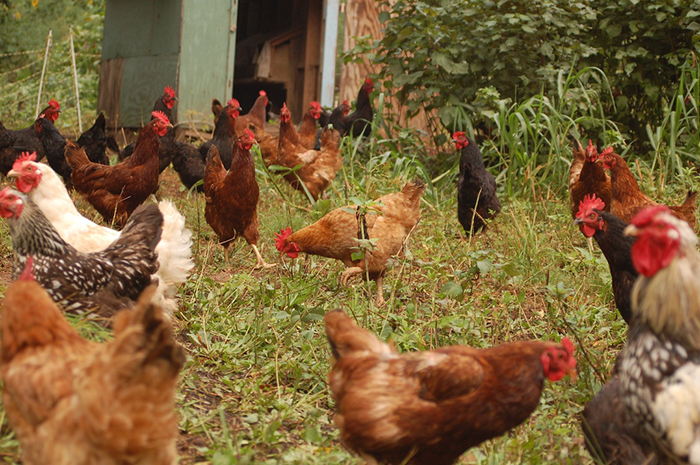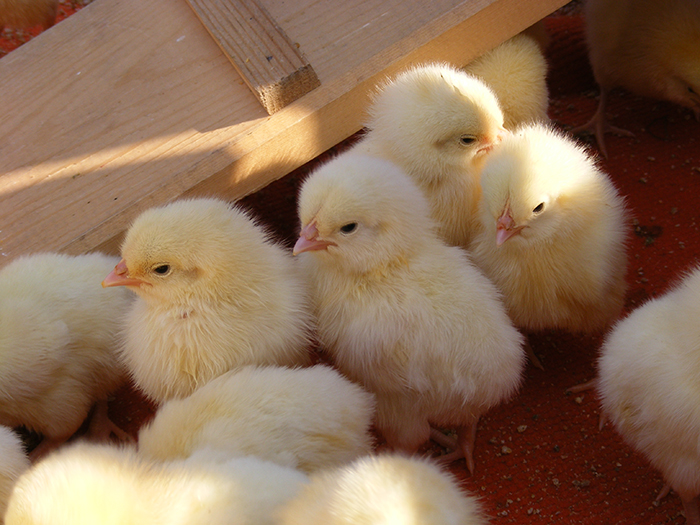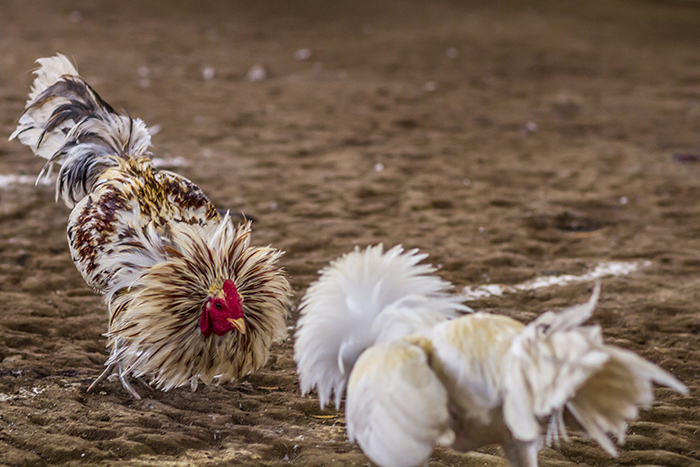Chickens are fascinating – the more scientists look into these birds, the more interesting and complex they seem. For example, would it ever occur to you that the color of chicken eggs sometimes coincides with the color of their earlobes? Or that there are more chickens on this Earth than there are humans? Surprising as it may seem, we actually share some intriguing similarities with these domesticated birds. For one – is that chickens, no different from humans, actually prefer attractive human faces over those not so genetically-gifted. Scroll down below to see the full list of things, that you may not have known about chickens until now.
This post may include affiliate links.
They Can Count Up To Five
Christine Nicol is a professor of animal welfare at Bristol University, who says that chickens have “many hidden depths.” She has found out and published in her paper, that the bird is capable of distinguishing numbers up to five and is familiar with the logic that, if A is greater than B, and B is greater than C, then A is greater than C.
Chicken communication is not at all primitive. Those who have observed these birds closely, know that chickens can be just as deceptive and cunning as humans when they need to.
They Understand That An Object That Moves Out Of Sight Still Exists
The chickens have an understanding that if an object moves out of their sight, it does not mean that it stops existing — something that human toddles fail to comprehend until they're 1-year-old or older.
Object permanence is the technical term, in case you didn't know. This is why babies get scared when their mom or dad leaves.
While chicken communication can be vocal, they also have a wide array of visual displays and body language to communicate a range of information. By using sophisticated signals, they convey their intentions, all while taking into account their prior experiences and knowledge.
They Have All Descended From The Red Jungle Fowl
Every chicken we see today is the descendant of the red jungle fowl “a very shy jungle bird that lives in South Asia, all the way from Pakistan to Sumatra and Indonesia,” Andrew Lawler, author of Why Did the Chicken Cross the World: The Epic Saga of the Bird That Powers Civilization told the media. The author continues that these birds are so shy, that when captured, they can die of a heart attack, due to feeling terrified.
Chickens are flock birds and they have a complex social hierarchical structure. Each chicken has a specific social status, recognized by the other members of the flock.
The Color Of Chicken Eggs Usually Coincides With The Color Of Their Earlobes
Ear lobe color seems to be related to egg color most of the time. Breeds with white earlobes usually lay white eggs (except for Penedesencas and Empordanesas). Chickens with red earlobes usually lay eggs in shades of brown (except for breeds and varieties like Easter Eggers, Ameraucanas, and Araucanas, which lay blue or green eggs)
The social dynamics and their orders influence many activities, such as feeding, drinking, egg-laying, mating, roosting and dust-bathing. The dominant chickens usually have primary access to food, shelter, and mates.
They Are Able To Recognize Up To 30 Other Individual Chickens
These birds can recognize up to 30 other individual chickens, whereas chicks imprint the image of their mother between 24 to 36 hours of hatching.
I'm sorry but now I'm wondering if chickens give themselves names. "Hey Phil! How's Sally?" "Oh, she laid two eggs last night."
In the study conducted in 2015, Lisel O'Dqyer together with Susan Hazel ran a class for undergraduate students at the University of Adelaide in Australia. The students performed experiments that involved training chickens. Before the class, students had to fill out a questionnaire in which the majority of them said that they had spent little time with chickens. They viewed them as simple animals, who aren't very likely to feel boredom, frustration or happiness. Two hours after training the chickens, students filled out the questionnaire again and this time, they were far more likely to say that the chickens can experience all three of the emotional states.
They Have A Preference For Attractive Human Faces
For the study, the scientists trained four hens to react to photos of an average female face but not an average male face, and vice versa for their male counterparts. Then, the chickens were shown pictures of faces with exaggeratedly masculine and feminine traits. As a result, the chickens pecked more at screens that showed symmetrical faces – revealing the same preferences for faces that humans have. These results suggest, that our natural inclination towards symmetry is rooted in the nervous system, contrary to the previous belief that it is so because of our cultural influences.
Or maybe the more attractive faces are chickens... ATTRACTIVE PEOPLE ARE CHICKENS CONSPIRACY
Some studies suggest that chickens can appreciate and envision how the world must appear to their counterparts and that they can use this information for their own advantage.
There Are More Chickens On This Earth Than There Are Humans
In addition to this, with 25 billion chickens in the world, there are more of them than any other bird species.
Lets hope they dont start recognizing more then 30 buddies and gang up on us...
Much of what we know about chickens is largely based on agricultural research which skews the results, as the industry tends to think about the animals in terms of their "productivity".
They Appear To Have A Basic Understanding Of Physics
In experiments conducted, the domestic birds showed more interest in realistic diagrams than those that defied the laws of physics.
In a relaxed environment, when their defenses are lowered, chickens play games (like hide and seek) and can sometimes even release a sound very similar to a cat's purring.
Roosters Perform A Little Dance Called ‘Tidbitting’
In this dance, roosters make sounds (food calls) and move their head up and down, picking up and dropping bits of food. Scientists have discovered that females prefer males that often perform tidbitting and have larger and brighter combs.
"The perception of chickens [as unaware and unintelligent] is driven in part by the motivation to dismiss their intelligence and sensibilities because people eat them," says Lori Marino, an author of The Inconvenient Truth About Thinking Chickens.
Many Archaeologists Believe That Chickens Were First Domesticated Not For Eating But For Cockfighting
Cockfighting, just like bullfighting, was originally a religious ritual performed between two villages or two groups. Thus, cockfighting became a very secular activity done strictly for religious purposes.

 Dark Mode
Dark Mode 

 No fees, cancel anytime
No fees, cancel anytime 









































